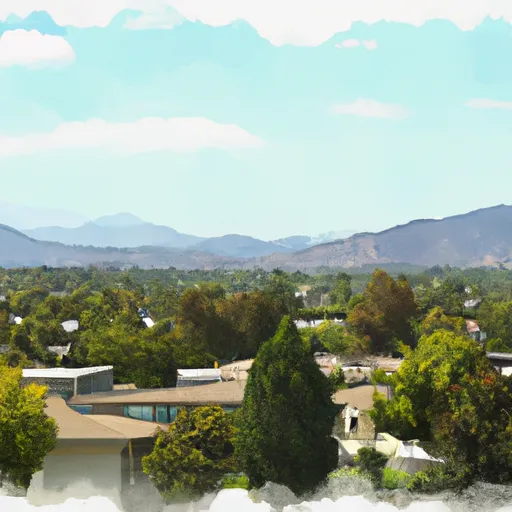-
 Snoflo Premium
Snoflo Premium
Get unlimited access to all our content
With no Ad interruptions! - Start Your Free Trial Login with existing account
Yucaipa
Eden Index
Climate
9.4
•
Recreation
8.0
•
Community
4.0
•
Safeguard
7.5/10

Yucaipa, California is a charming city located in San Bernardino County, nestled in the foothills of the San Bernardino Mountains. The climate in Yucaipa is characterized by hot, dry summers and mild, wet winters. Summers are typically sunny with temperatures often exceeding 90°F, while winters are cooler with occasional rainfall.
Hydrologically, Yucaipa is known for its groundwater resources. The city relies heavily on groundwater wells to meet its water demands. The region is also home to the Yucaipa Regional Park, which encompasses a beautiful lake and offers various outdoor activities. Visitors can enjoy fishing, boating, and swimming in the summer months, as well as picnicking and hiking year-round.
Additionally, Yucaipa boasts several nearby outdoor recreational opportunities. The Yucaipa Valley Golf Course provides golf enthusiasts with a challenging and picturesque experience. For nature lovers, the neighboring San Bernardino National Forest offers countless trails for hiking, biking, and camping. The stunning Oak Glen Preserve, famous for its apple orchards and scenic vistas, is also a short drive away, providing visitors with a delightful escape into nature.
What is the Eden Index?
The Snoflo Eden Index serves as a comprehensive rating system for regions, evaluating their desirability through a holistic assessment of climate health, outdoor recreation opportunities, and natural disaster risk, acknowledging the profound impact of these factors on livability and well-being.
Climate Health Indicator (CHI): 9.4
Yucaipa receives approximately
521mm of rain per year,
with humidity levels near 75%
and air temperatures averaging around
17°C.
Yucaipa has a plant hardyness factor of
9, meaning
plants and agriculture in this region tend to thrive here all year round.
By considering the ideal temperature range, reliable water supplies, clean air, and stable seasonal rain or snowpacks, the Climate Health Indicator (CHI) underscores the significance of a healthy climate as the foundation for quality living.
A healthy climate is paramount for ensuring a high quality of life and livability in a region, fostering both physical well-being and environmental harmony. This can be characterized by ideal temperatures, reliable access to water supplies, clean air, and consistent seasonal rain or snowpacks.
Weather Forecast
Streamflow Conditions
Santa Ana
Area Rivers
Santa Ana
Snowpack Depths
Santa Ana
Reservoir Storage Capacity
Santa Ana
Groundwater Levels
Recreational Opportunity Index (ROI): 8.0
The Recreational Opportunity Index (ROI) recognizes the value of outdoor recreational options, such as parks, hiking trails, camping sites, and fishing spots, while acknowledging that climate plays a pivotal role in ensuring the comfort and consistency of these experiences.
Access to outdoor recreational opportunities, encompassing activities such as parks, hiking, camping, and fishing, is crucial for overall well-being, and the climate plays a pivotal role in enabling and enhancing these experiences, ensuring that individuals can engage in nature-based activities comfortably and consistently.
Camping Areas
| Campground | Campsites | Reservations | Toilets | Showers | Elevation |
|---|---|---|---|---|---|
| Pine Knot | 48 | 6,984 ft | |||
| Dogwood | 93 | 5,739 ft | |||
| Lake Skinner | None | 1,514 ft | |||
| March ARB Military | None | 1,509 ft | |||
| Barton Flats | 52 | 6,404 ft | |||
| Lake Perris State Rec Area | 351 | 1,600 ft | |||
| Yucaipa Regional Park | 51 | 2,658 ft | |||
| San Gorgonio | 54 | 6,508 ft | |||
| Big Bear Military | None | 7,009 ft | |||
| Bogart Park | 26 | 3,171 ft |
Catastrophe Safeguard Index (CSI):
The Catastrophe Safeguard Index (CSI) recognizes that natural disaster risk, encompassing floods, fires, hurricanes, and tornadoes, can drastically affect safety and the overall appeal of an area.
The level of natural disaster risk in a region significantly affects safety and the overall livability, with climate change amplifying these risks by potentially increasing the frequency and intensity of events like floods, fires, hurricanes, and tornadoes, thereby posing substantial challenges to community resilience and well-being.
Community Resilience Indicator (CRI): 4.0
The Community Resilience Indicator (CRI) recognizes that education, healthcare, and socioeconomics are crucial to the well-being of a region. The CRI acknowledges the profound impact of these elements on residents' overall quality of life. By evaluating educational resources, healthcare accessibility, and economic inclusivity, the index captures the essential aspects that contribute to a thriving community, fostering resident satisfaction, equity, and social cohesion.

